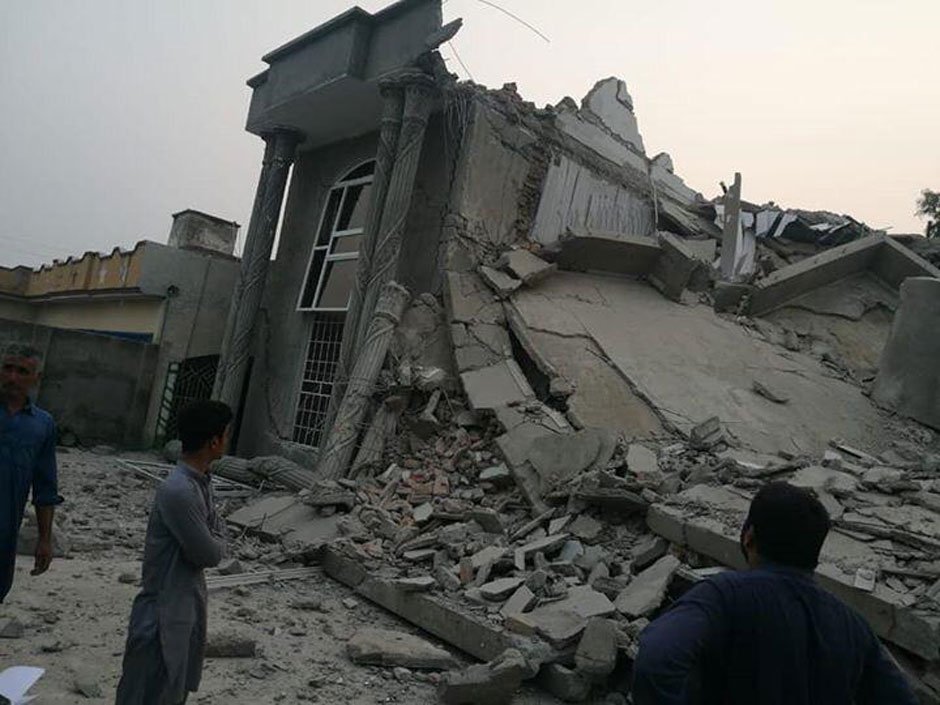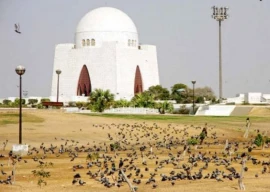
According to Punjab Irrigation Department officials, the 5.6 magnitude earthquake in Azad Jammu and Kashmir heavily damaged both sides of a 15-kilometre waterway at Upper Jhelum Canal. Repairing the waterway could take anywhere between two to four months as the quake caused heavy cracks to appear in its structure, they told The Express Tribune.
Alarmingly, more than 540,000 acres of agricultural land in Sargodha, Gujrat, Mandi Bahauddin and other adjoining districts depend on the waterway in question for their supply of water for irrigation. An indefinite closure of the canal, as such, could wreak havoc on the country’s agricultural produce.
The officials said the department fears that the production of various crops, including wheat and rice, may be drastically reduced in the months to come. They also said that restoration work on the canal, in addition to taking months, may cost millions of rupees.
Provincial authorities have already started to estimate the money required for reconstruction and repair work along the water way. “A 15-kilometre stretch of the canal, from turret number 30 to turret number 80, has developed massive cracks after Tuesday’s earthgquake,” said an irrigation department official. “As a result, the elevation on both banks of the canal has gone below the water-level. Entry and exit passages along with two of the four siphons have been damaged as well,” he added.
According to the officials, the irrigation department will carry out a survey to ascertain the final cost for restoring the canal to a fully functional state. Immediate reports, however, suggest that heavy machinery will be required for repair works, they said. The effort will also require millions of tonnes of sand and other building material, they added.
Speaking to The Express Tribune, Punjab Agricultural Department Director General Tausih Anjum Buttar said that the prolonged closure of the canal could negatively impact agricultural production in areas that receive water from it.
“Many areas are in need of more water as the wheat crop is to be sown in the next few weeks for which a consistent supply of water is extremely crucial. In Sargodha and Gujrat, we have an extensive amount of orange orchards which also greatly depend on water from this canal,” Buttar said. “An alternative is to provide water from tube wells, but not only is that costly, it comes with its own set of challenges as well.” He added that his wing is waiting for a final report from the Irrigation Department so that it can advise farmers on alternatives accordingly.
The Upper Jhelum Canal is a crucial part of an extensive irrigation network called the Triple Canal System. The network was constructed in its initial form by the British when they ruled over the Subcontinent. The Upper Jhelum Canal, which extends to 32 kilometres, was built in 1915 after the British received a go ahead from then ruler of Kashmir Maharaja Pratap Singh.
The Upper Jhelum Canal originates from Mangla Dam and covers various parts of Shadiwal and Gujrat before ending up at Khanqi Barrage at Chenab River. At present, it is among the largest irrigation supply lines in Pakistan and at its peak, delivers 9,000 cusecs of water. The canal was operating at a capacity of 7,500 cusecs when the Tuesday’s tremor occurred.
1731570357-0/elon-musk-(1)1731570357-0-405x300.webp)
-(1)1717678110-0/Kendrick-(1)-(1)1717678110-0-165x106.webp)



1732428532-0/BeFunk_§_]__-(43)1732428532-0.jpg)




1725254039-0/Untitled-design-(24)1725254039-0-270x192.webp)






COMMENTS
Comments are moderated and generally will be posted if they are on-topic and not abusive.
For more information, please see our Comments FAQ